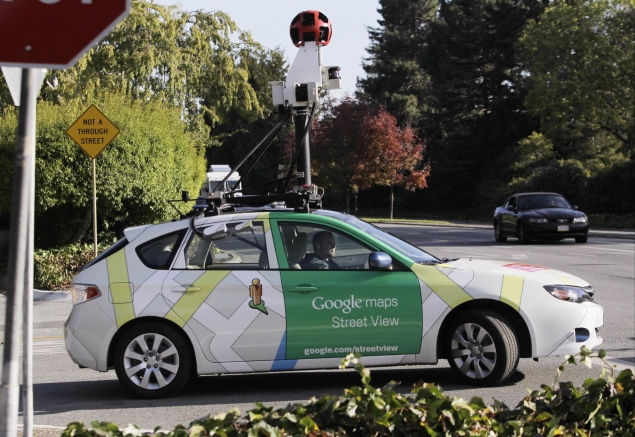- Home
- Internet
- Internet News
- Google Street View found to be useful weapon against invading alien species
Google Street View found to be useful weapon against invading alien species

A team at France's French National Agency for Agricultural Research (INRA) used the online tool, which provides 360-degree images of streets filmed by specially-fitted cars, to gauge the spread of a tree-killing insect.
The pine processionary moth Thaumetopoea pityocampa in Latin is a foliage-munching critter that is native to balmy southern Europe but heading northwards and to higher altitudes as temperatures rise.
Its preferred food is an evergreen called the Austrian pine, which is extensively used in Europe's managed forests and ornamental gardens.
In autumn, larvae of the moth build a nest in which to hunker down for the winter a highly visible home made from white, shiny silk that hangs at the end of branches like a hairy lightbulb.
Using this as a telltale, the researchers "drove" around a large area with Google Street View to map districts that had been invaded by the moth.
The area of 47,000 square kilometres (18,100 square miles) bigger than the Netherlands was divided up into a grid of 183 large-scale "cells", each comprising 16 kms by 16 kms (10 miles by 10 miles).
If a nest was spotted, the "cell" was marked down as infected.
The results from Google Street View were 90 percent as accurate as a test conducted on the ground by a human, who drove around the area in a car.
However, cyber-spotting was less successful in a different test that was carried out on a smaller scale.
A test area of 121 square kilometres (46 sq. miles) was marked out in smaller "cells", but Google Street View performed less well, partly because of a lack of roads in some places.
Google Street View can be performed "in silico sampling of species occurrences", the scientists said, in a Latin quip about the use of computers as a substitute for boots-on-the-ground humans.
"Our results show that it has some promise for future use, at least with species easily observed by means of road sampling such as the pine processionary moth."
Earlier this year, a similar pilot study by Spanish biologists mapped cliff sites in northwestern Spain that could be a potential habitat for two species of vulture, proving the usefulness of Google Street View for endangered as well as invasive species.
Both studies appear in the public-access journal PLoS One.
Get your daily dose of tech news, reviews, and insights, in under 80 characters on Gadgets 360 Turbo. Connect with fellow tech lovers on our Forum. Follow us on X, Facebook, WhatsApp, Threads and Google News for instant updates. Catch all the action on our YouTube channel.
Related Stories
- Samsung Galaxy Unpacked 2025
- ChatGPT
- Redmi Note 14 Pro+
- iPhone 16
- Apple Vision Pro
- Oneplus 12
- OnePlus Nord CE 3 Lite 5G
- iPhone 13
- Xiaomi 14 Pro
- Oppo Find N3
- Tecno Spark Go (2023)
- Realme V30
- Best Phones Under 25000
- Samsung Galaxy S24 Series
- Cryptocurrency
- iQoo 12
- Samsung Galaxy S24 Ultra
- Giottus
- Samsung Galaxy Z Flip 5
- Apple 'Scary Fast'
- Housefull 5
- GoPro Hero 12 Black Review
- Invincible Season 2
- JioGlass
- HD Ready TV
- Laptop Under 50000
- Smartwatch Under 10000
- Latest Mobile Phones
- Compare Phones
- Redmi Note 15 5G
- Redmi Note 15 Pro 5G
- Redmi Note 15 Pro+ 5G
- Lava Play Max
- Poco C85 5G
- Honor Magic 8 Lite
- Jolla Phone
- Realme P4x 5G
- Asus ProArt P16
- MacBook Pro 14-inch (M5, 2025)
- OnePlus Pad Go 2
- Poco Pad M1
- Just Corseca Skywatch Pro
- Honor Watch X5
- Acerpure Nitro Z Series 100-inch QLED TV
- Samsung 43 Inch LED Ultra HD (4K) Smart TV (UA43UE81AFULXL)
- Asus ROG Ally
- Nintendo Switch Lite
- Haier 1.6 Ton 5 Star Inverter Split AC (HSU19G-MZAID5BN-INV)
- Haier 1.6 Ton 5 Star Inverter Split AC (HSU19G-MZAIM5BN-INV)

















